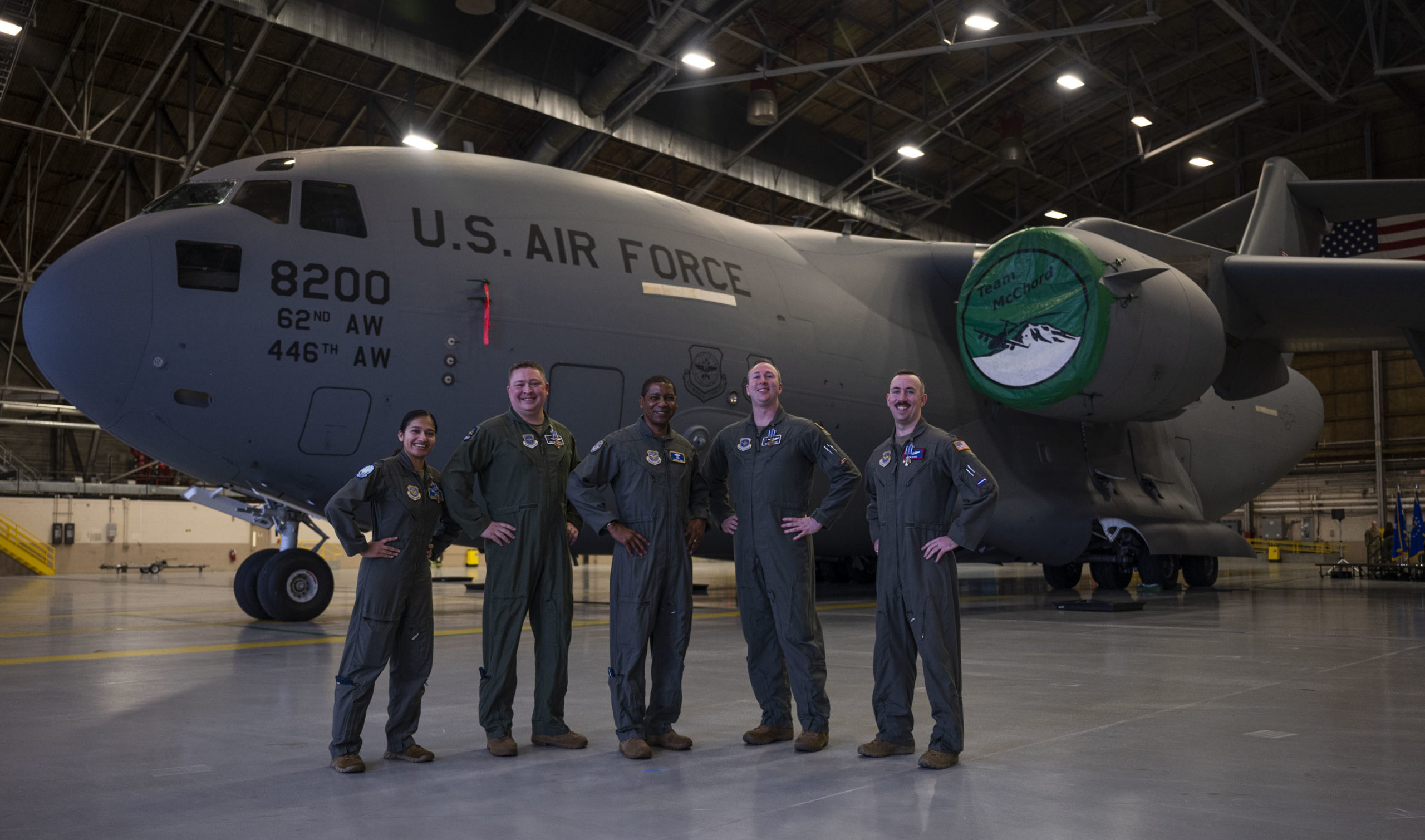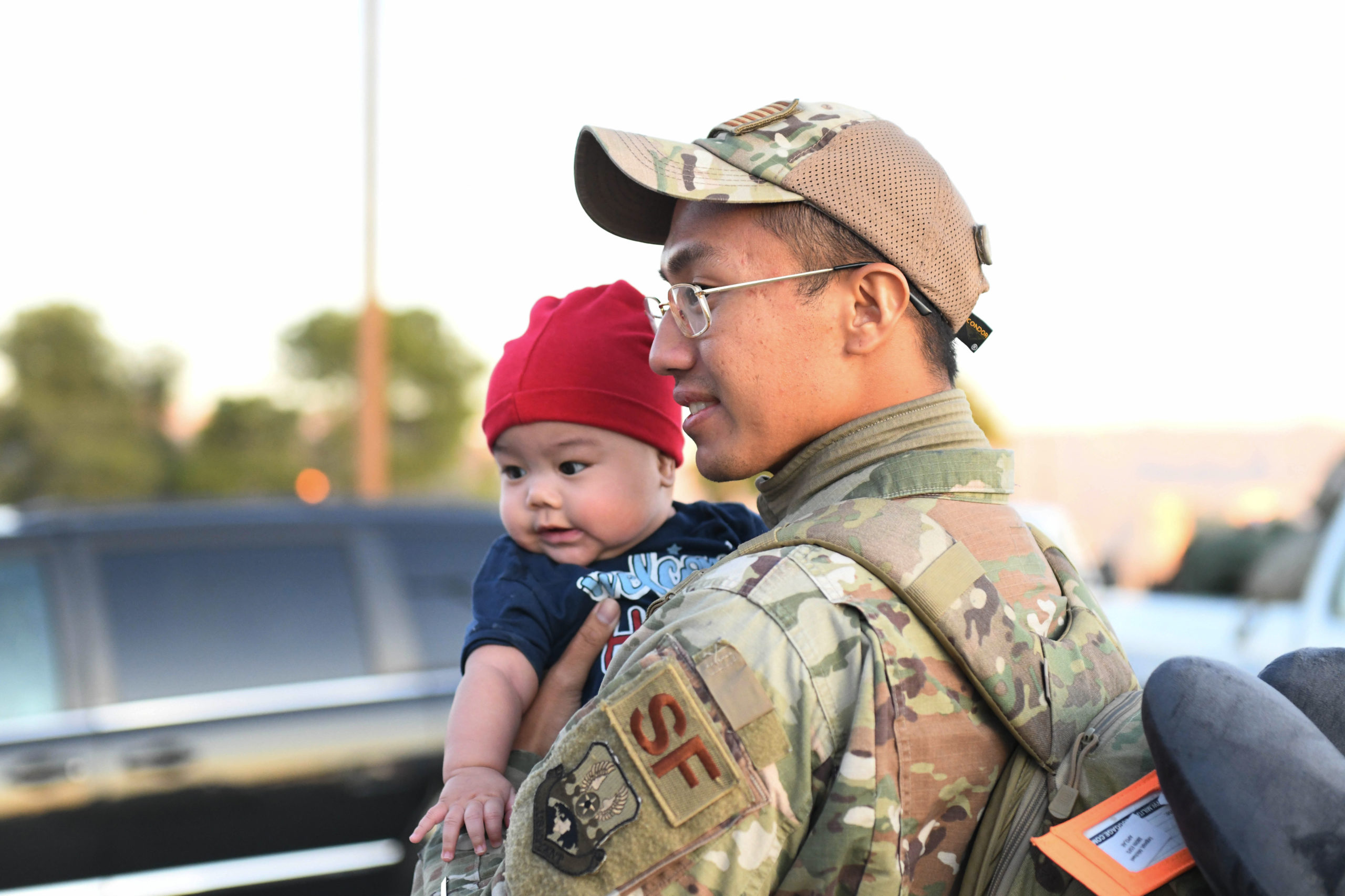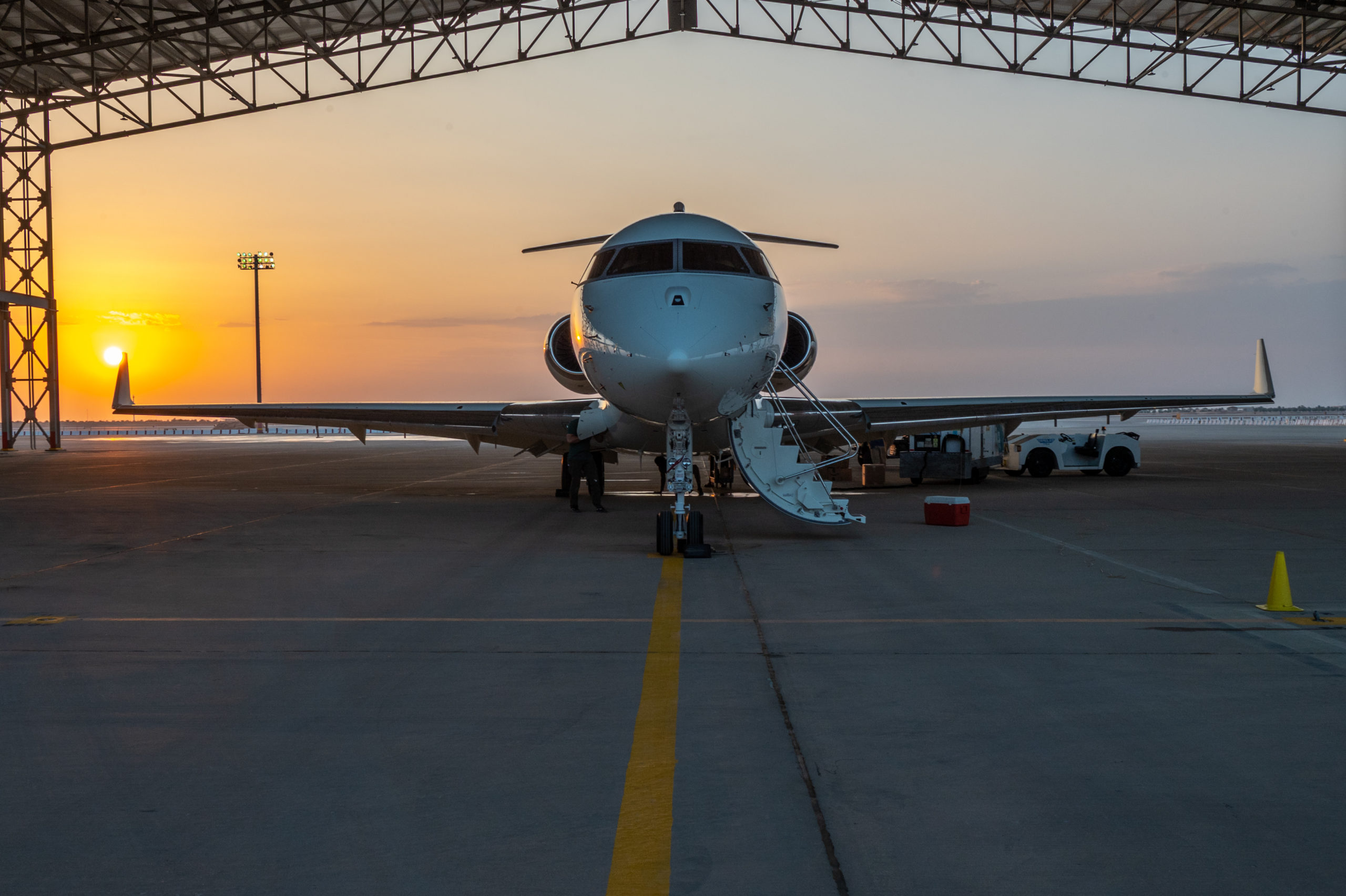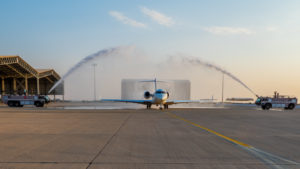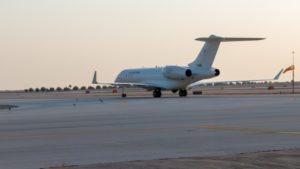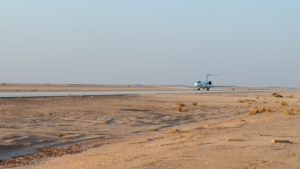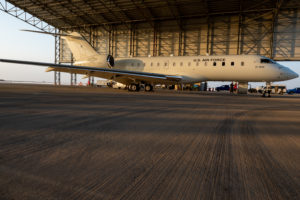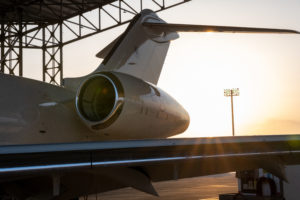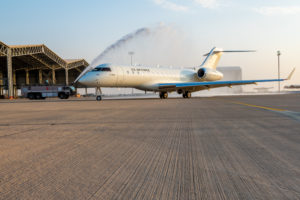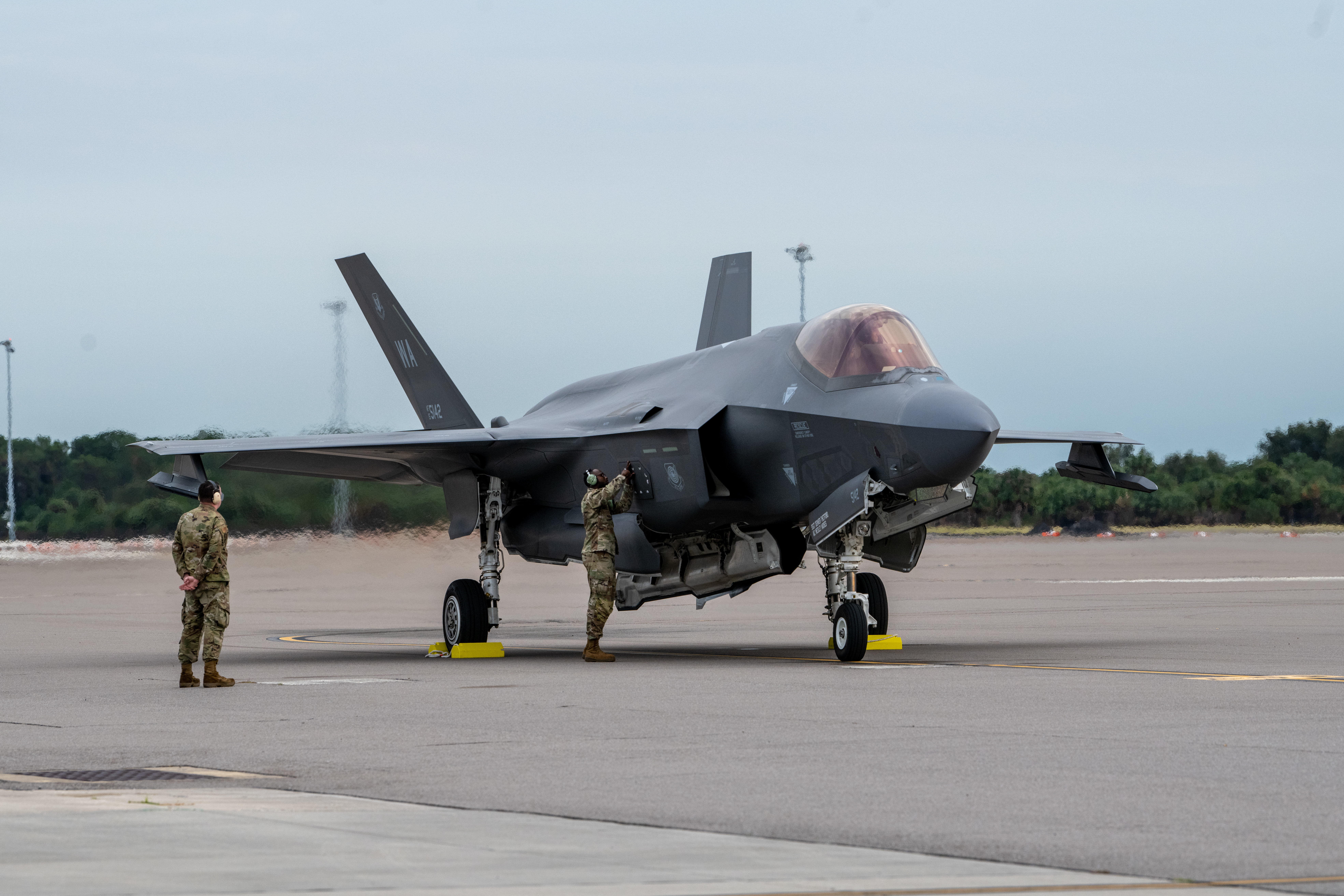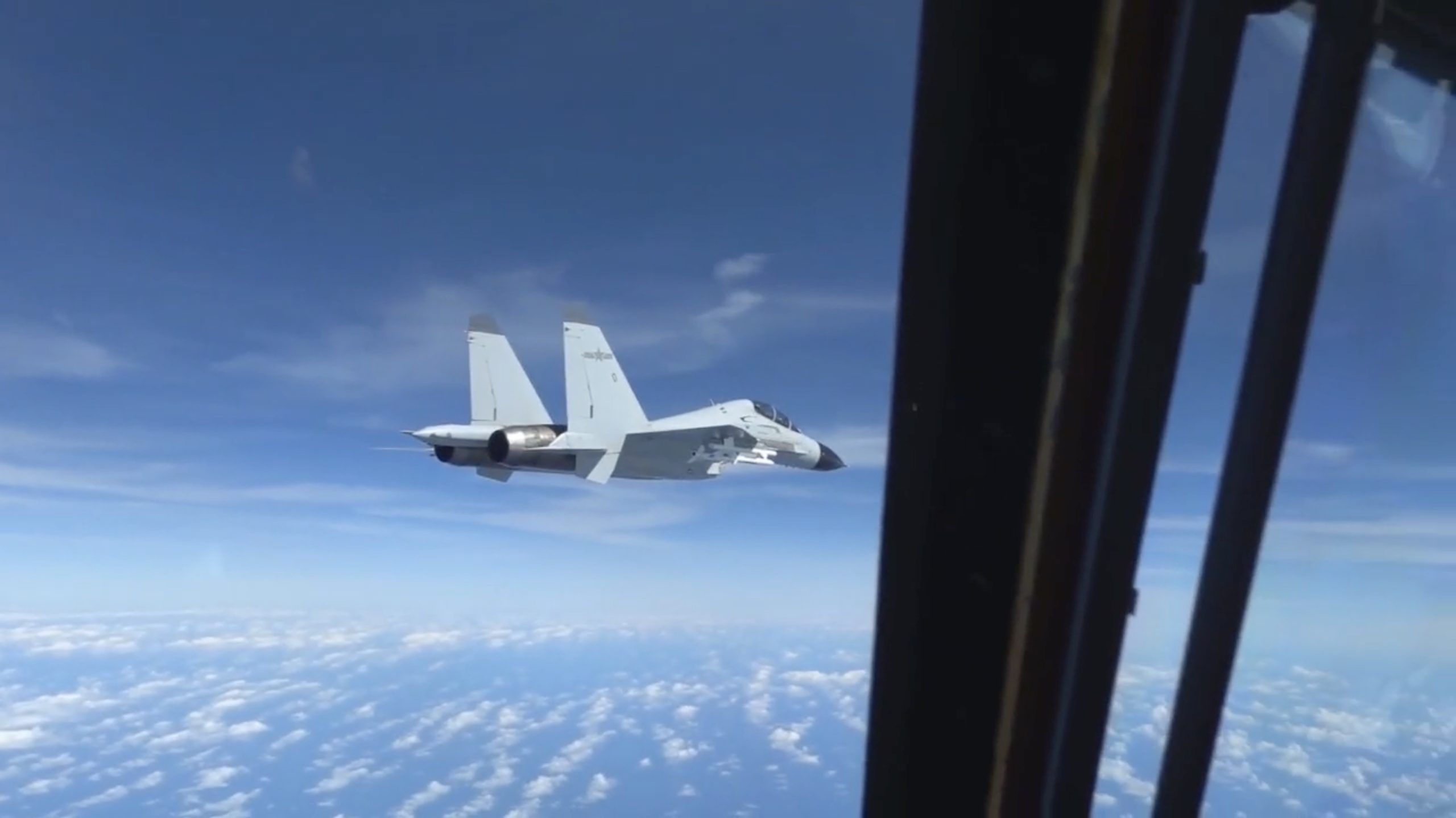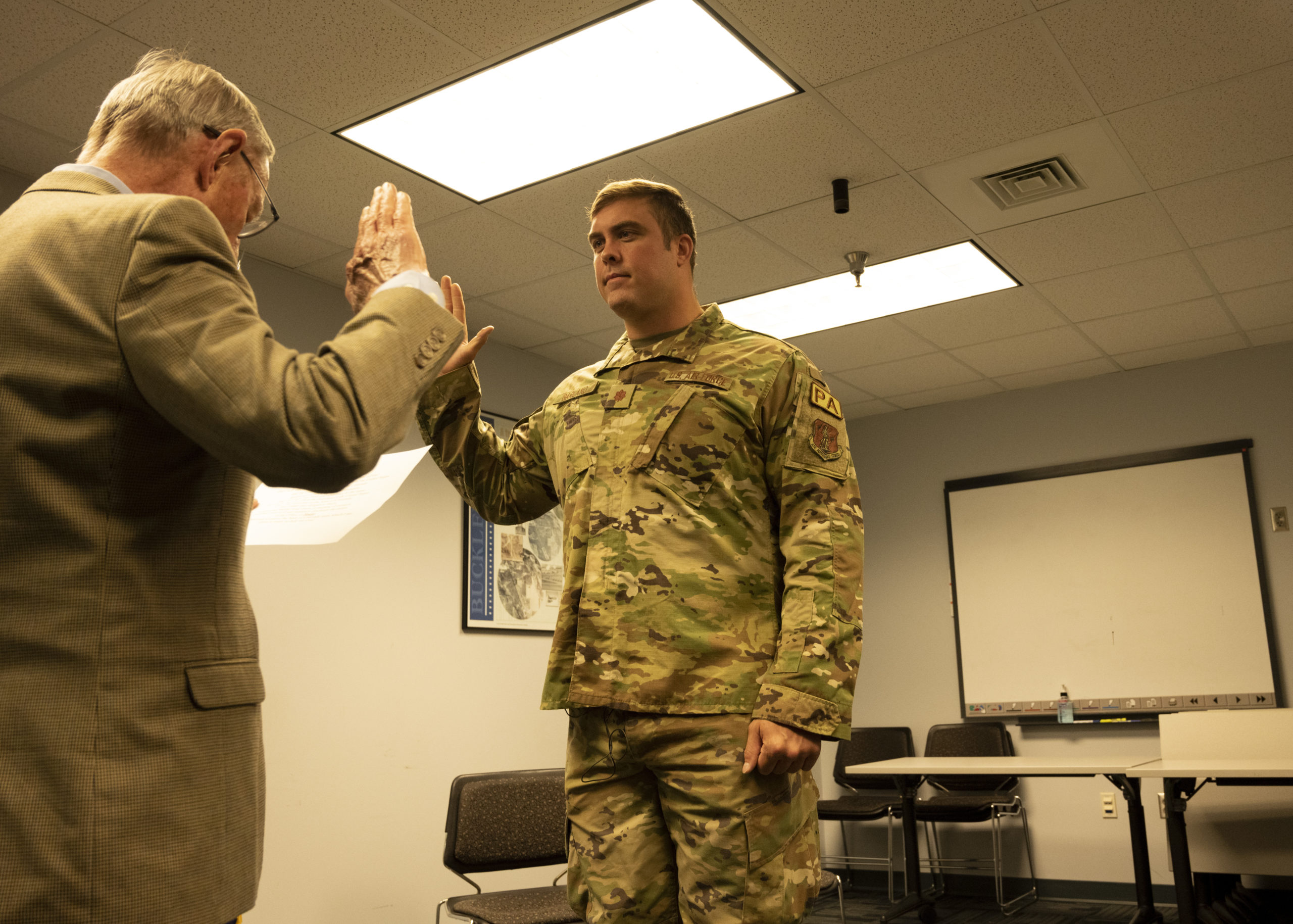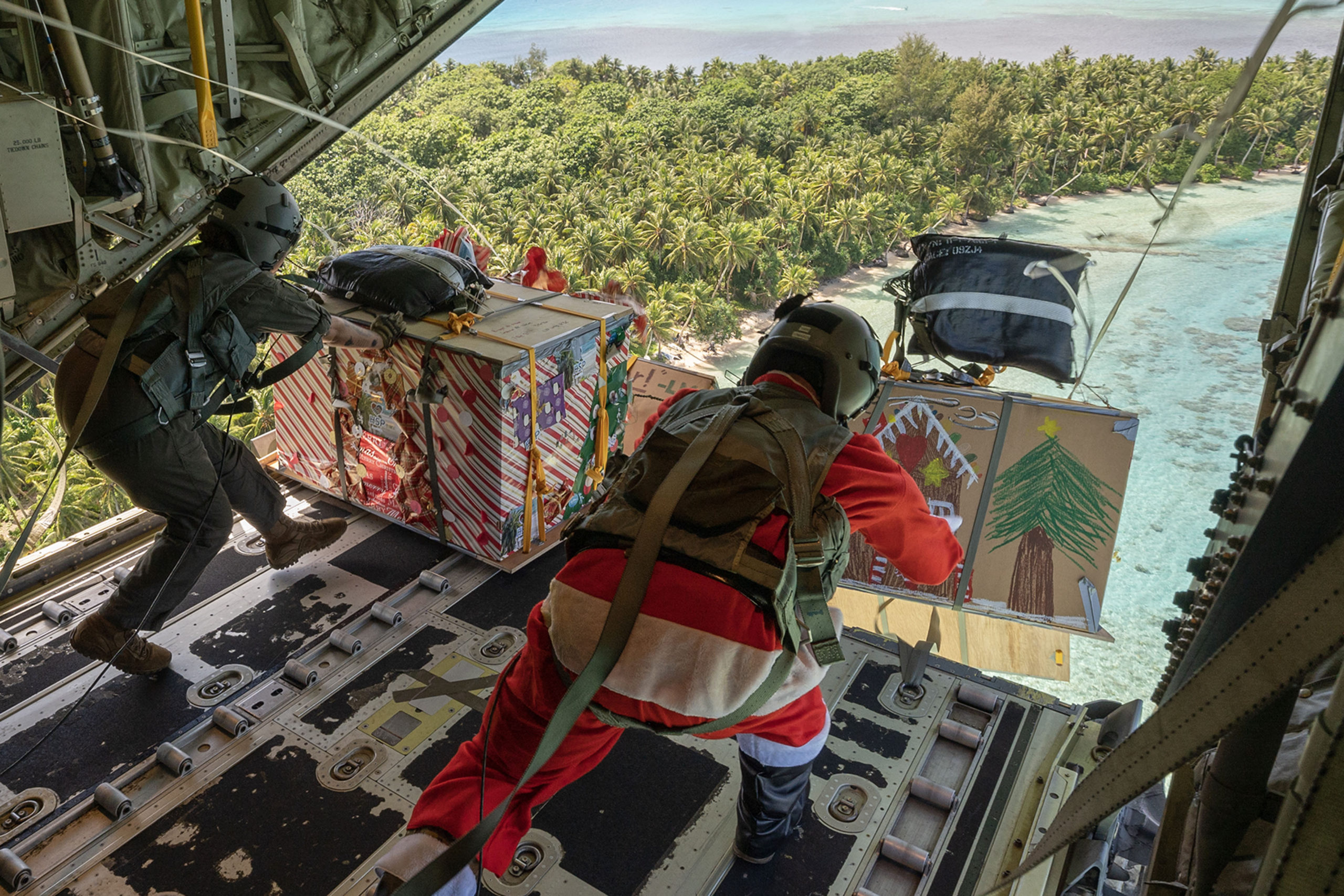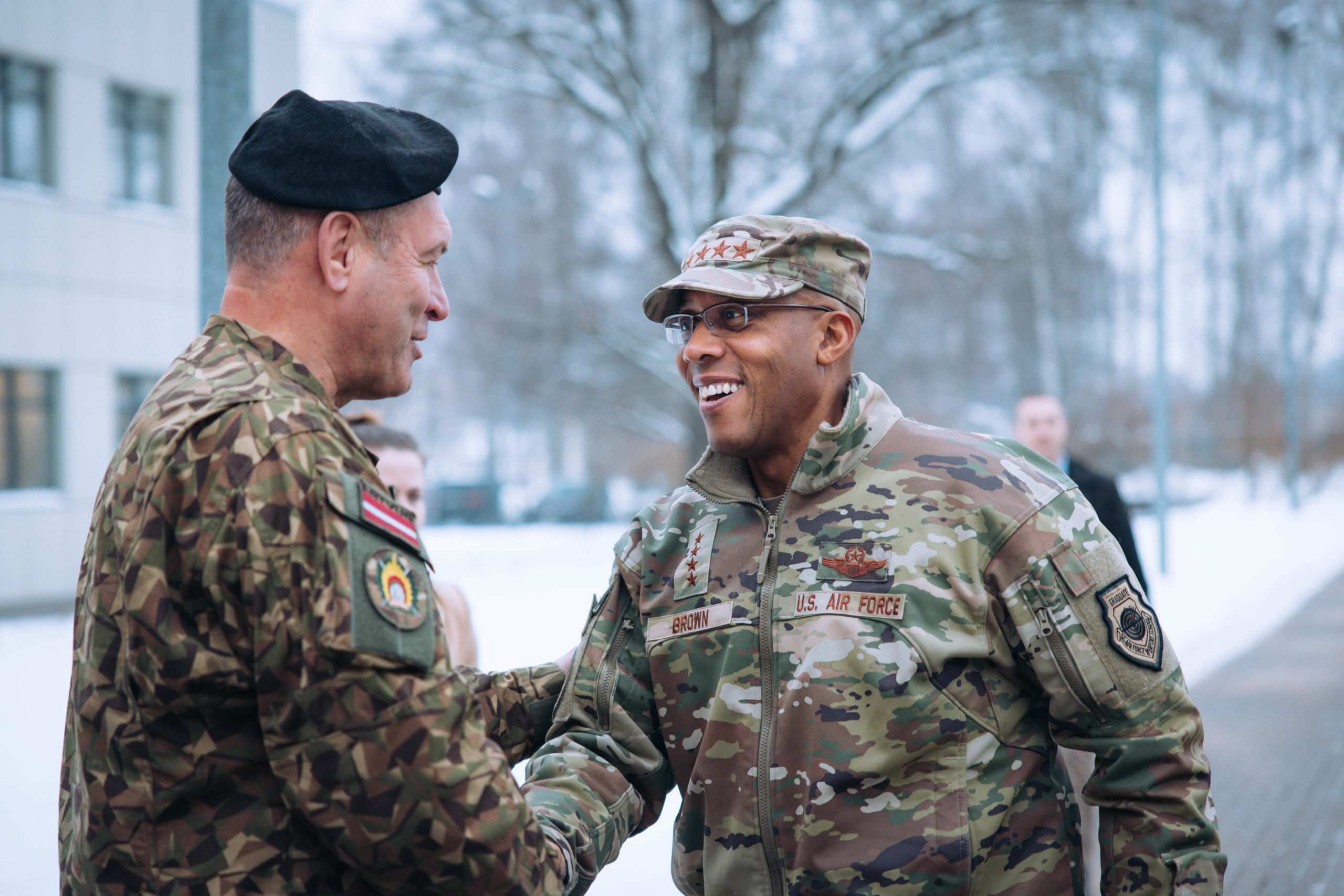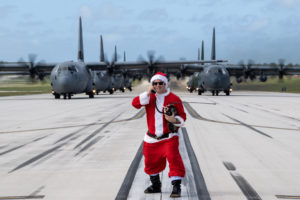
U.S. Air Force Lt. Col. Jeffrey Furnary, 36th Expeditionary Airlift Squadron director of operations, communicates by radio with C-130 pilots at Andersen Air Force Base, Guam, Dec. 10, 2022, during Operation Christmas Drop 2022. U.S. Air Force photo by Yasuo Osakabe
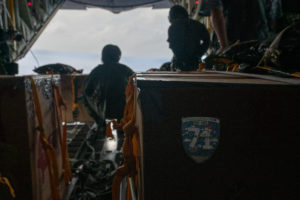
Japan Air Self-Defense Force Chief Master Sgt. Tatsuhiro Kurimoto and Staff Sgt. Ikkei Ono, C-130H Hercules loadmasters prepare to push packages out over the islands of Ruo and Murilo during Operation Christmas Drop, Dec. 6, 2022. Operation Christmas Drop is an annual U.S. Air Force tradition of packaging and delivering donated supplies such as food, fishing equipment, school books, and clothing to more than 20 thousand islanders across 56 remote islands throughout the Federated States of Micronesia and the Republic of
Palau.(U.S. Air Force photo by Airman 1st Class Allison Martin)
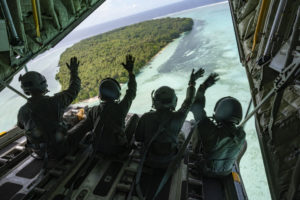
U.S. Air Force Col. Julie Gaulin (middle right), Vice Commander, 374th Airlift Wing, Col. Richard McElhaney (left), Commander, 36th Contingency Response Group, Japan Air Self-Defense Force Tech. Sgt. Tokita Akihito (middle left), 401st Tactical Airlift Squadron, and Staff Sgt. Ohno Ikkei (right), wave from the ramp of a JASDF C-130H Hercules, during Operation Christmas Drop 2022, Dec. 8, 2022.Operation Christmas Drop is the longest running Department of Defense humanitarian mission that delivers critical aid to island communities throughout the western Pacific while also providing an opportunity for aircrew to hone important skills needed for future operations. (U.S. Air Force photo by Staff Sgt. Jerreht Harris)
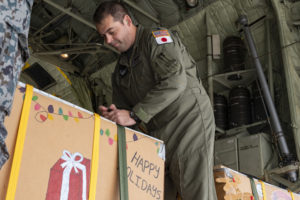
U.S. Air Force Lt. Col. Lucas Crouch, 401st Tactical Airlift Squadron, Komaki Air Base, Japan, writes a message on a supply bundle before takeoff from Andersen Air Force Base, Guam, during Operation Christmas Drop 2022, Dec. 8, 2022. Operation Christmas Drop is the longest running Department of Defense humanitarian mission that delivers critical aid to island communities throughout the western Pacific while also providing an opportunity for aircrew to hone important skills needed for future operations. (U.S. Air Force photo by Staff Sgt. Jerreht Harris)
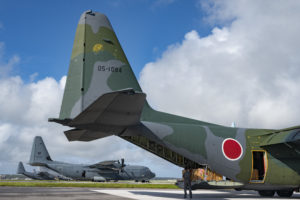
A Japan Air Self-Defense Force C-130H, from the 401st Tactical Airlift Squadron, Komaki Air Base, Japan, callsign Santa-52, sits on the flight line of Andersen Air Force Base, Guam, alongside U.S. Air Force C-130J’s before participating in Operation Christmas Drop 2022, Dec. 8, 2022. Operation Christmas Drop is the longest running Department of Defense humanitarian mission that delivers critical aid to island communities throughout the western Pacific while also providing an opportunity for aircrew to hone important skills needed for future operations. (U.S. Air Force photo by Staff Sgt. Jerreht Harris)
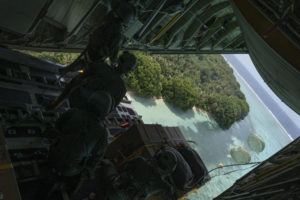
Japan Air Self-Defense Force and U.S. Air Force aircrew members deliver supply bundles to Ngatik Atoll in the western Pacific from the back of a JASDF C-130H Hercules, during Operation Christmas Drop 2022, Dec. 8, 2022. Operation Christmas Drop is the longest running Department of Defense humanitarian mission that delivers critical aid to island communities throughout the western Pacific while also providing an opportunity for aircrew to hone important skills needed for future operations. (U.S. Air Force photo by Staff Sgt. Jerreht Harris)
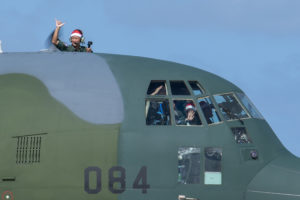
Japan Air Self-Defense Force aircrew with the 401st Tactical Airlift Squadron wave at members of the U.S. Air Force during a multinational elephant walk at Andersen Air Force Base, Guam, Dec. 10, 2022, as part of Operation Christmas Drop 2022. Seven C-130 aircraft from the U.S. Air Force, Royal Australian Air Force, Japan Air Self-Defense Force, Republic of Korea Air Force and Royal New Zealand Air Force participated in the elephant walk to mark the conclusion of Operation Christmas Drop, a humanitarian assistance effort meant to support remote island communities in the Federated States of Micronesia and Republic of Palau. (U.S. Air Force photo by Yasuo Osakabe)
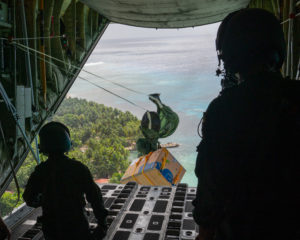
Japan Air Self-Defense Force Chief Master Sgt. Tatsuhiro Kurimoto and Staff Sgt. Ikkei Ono, C-130H Hercules loadmasters push a package out over the island of Murilo during Operation Christmas Drop, Dec. 6, 2022. Operation Christmas Drop is an annual U.S. Air Force tradition of packaging and delivering donated supplies such as food, fishing equipment, school books, and clothing to more than 20 thousand islanders across 56 remote islands throughout the Federated States of Micronesia and the Republic of Palau.(U.S. Air Force photo by Airman 1st Class Allison Martin)
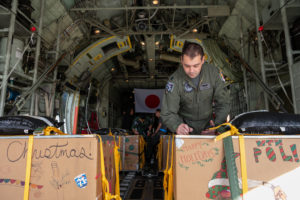
U.S. Air Force Lt. Col. Lucus Crouch, Japan Air Self-Defense Force exchange officer and C-130H instructor pilot, writes on a package before an Operation Christmas Drop flight at Andersen Air Force Base, Guam, Dec. 6, 2022. The weeklong international effort allows Pacific Air Forces Airmen from the 374th Airlift Wing from Yokota Air Base, Japan; the 36th Wing, Andersen AFB, Guam; and the 515th Air Mobility Operations Wing from Joint Base Pearl Harbor-Hickam, Hawaii, to work with partner nation Airmen to plan and execute low-cost, low-altitude air
drops, improving critical interoperability and communication for future
real-world humanitarian assistance and disaster relief missions.(U.S. Air Force photo by Airman 1st Class Allison Martin)
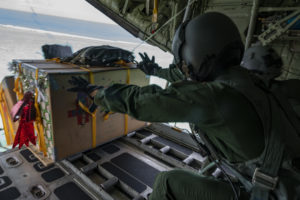
U.S. Air Force Col. Julie Gaulin (right), Vice Commander, 374th Airlift Wing, and Japan Air Self-Defense Force Tech. Sgt. Tokita Akihito (left), 401st Tactical Airlift Squadron, prepare to drop a supply bundle from the ramp of a C-130H, callsign Santa-52, as part of Operation Christmas Drop 2022, Dec. 8, 2022. Operation Christmas Drop is the longest running Department of Defense humanitarian mission that delivers critical aid to island communities throughout the western Pacific while also providing an opportunity for aircrew to hone important skills needed for future operations. (U.S. Air Force photo by Staff Sgt. Jerreht Harris)
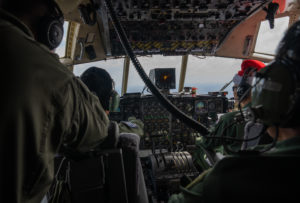
Japan Air Self-Defense Force Maj. Haruki Morota, a C-130H Hercules pilot and 2nd Lt. Senichiro Kawakami, C-130H Hercules co-pilot assigned to the 401st Tactical Airlift Squadron, Komaki Air Base, Japan, fly over the Pacific Ocean during Operation Christmas Drop, Dec. 6, 2022. Operation Christmas Drop is an annual U.S. Air Force tradition of packaging and delivering donated supplies such as food, fishing equipment, school books, and clothing to more than 20 thousand islanders across 56 remote islands throughout the Federated States of Micronesia and the Republic of Palau.(U.S. Air Force photo by Airman 1st Class Allison Martin)
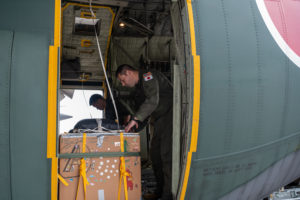
U.S. Air Force Lt. Col. Lucus Crouch, Japan Air Self-Defense Force exchange officer and C-130H instructor pilot, writes on a package before an Operation Christmas Drop flight at Andersen Air Force Base, Guam, Dec. 6, 2022. The weeklong international effort allows Pacific Air Forces Airmen from the 374th Airlift Wing from Yokota Air Base, Japan, the 36th Wing, Andersen AFB, Guam, and the 515th Air Mobility Operations Wing from Joint Base Pearl Harbor-Hickam, Hawaii, to work with partner nation Airmen to plan and execute low-cost, low-altitude air
drops, improving critical interoperability and communication for future
real-world humanitarian assistance and disaster relief missions. (U.S. Air Force photo by Airman 1st Class Allison Martin)
